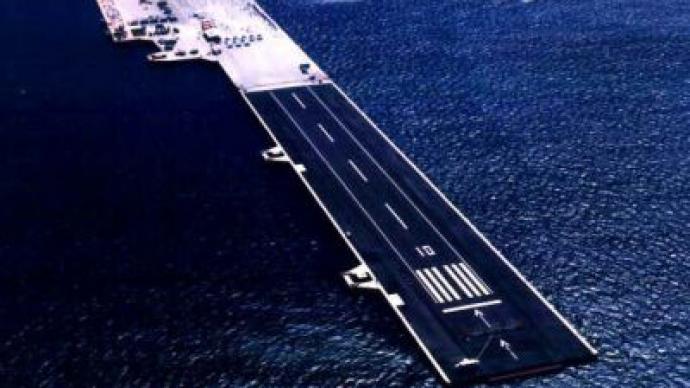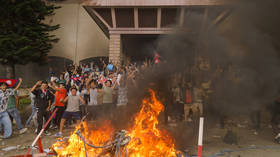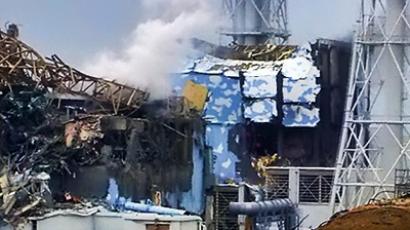Floating island may store Japan’s radioactive water

Workers at the stricken Fukushima facility have sealed a breach in one of the reactors using concrete. However, the plant’s operator says that it has not stopped highly radioactive water from seeping into the Pacific Ocean.
Specialists are set to make another attempt to encase the 20-centimeter fracture in concrete. Also, they are continuing to look for other possible damage to the reactor’s drainage system. Japan's nuclear officials say highly radioactive water has been seeping through the crack into the Pacific Ocean. The radiation level in the seawater near the station is reported to be around 4,385 times higher than normal.The UN's top nuclear official has warned that the operation to solve the crisis at the site will be prolonged. Authorities say they do not plan to expand the 20-kilometer evacuation zone, although radiation has been registered 40 kilometers from the facility.Another serious problem hampering the repair works is contaminated water that has been soaking the basements of the reactor buildings, filling up tunnel-like underground trenches connected to them. Removal of this water is necessary to reduce the risk to workers who are currently struggling to restore the cooling system of the reactors.Efforts to remove the tainted water from the basements continued on Saturday, Kyodo News reports. To store it, TEPCO – the operator of the troubled Fukushima-1 plant – is considering using an artificial floating island, or “Mega-Float”. The total capacity of its reservoirs exceeds 10,000 tons of water.The company may also pump inert nitrogen into the containment vessels of the reactors to replace explosive hydrogen, in an effort to prevent the risk of more blasts.It is not yet clear how much time it would take to implement all that has been planned. The operator still has to continue pouring massive amounts of water into the reactors and the spent nuclear fuel pools in an attempt to cool the rods down. On Saturday, it resumed transferring fresh water to the tanks from a US Navy barge.On Saturday, for the first time since the earthquake and tsunami hit Japan, Prime Minister Naoto Kan visited the devastated areas. He went to the completely destroyed town of Rikudzentakata, where he met the locals who had survived the tsunami and promised them all necessary support from the government. Later in his visit, the prime minister also met with the specialists working at Fukusima-1 nuclear plant at their temporary headquarters located 20 kilometers away from the plant. “We have to make all the efforts so that our country can overcome the consequences of the devastating earthquake,” Kan told them.
According to Greenpeace nuclear power expert Jan Haverkamp, not everyone in the plant’s proximity who should have been evacuated was evacuated.“There is still in the 20- to 30-kilometer zone a large group of people that are advised to stay indoors. They are now already indoors for three weeks, and that is not a very easy way to live,” he said. “With those kind of conflicting pieces of advice come from all sides, they get extra anxious. I think it would be better indeed to get those people out in a place where they can relax, where they do not have to be scared of anything that could happen to the power plant.”
Dr. Jens Wagner, a member of International Physicians for the Prevention of Nuclear War, says that after enough time passes and people calm down about this tragedy, the nuclear industry will once again try to talk people into believing that nuclear power plants can be safe. “We can now do some calculations and see that actually the risk [of a new disaster] is quite high, and with the amount of reactors we have around the world, we must be prepared to have more of these catastrophes,” he said. Wagner believes that it will take a political decision to shut down the nuclear power plants, just as it was a political decision that led to them being built in the first place.“[This decision] was mainly driven by the military-industrial complex which wanted to monopolize energy production and, of course, produce nuclear weapons,” he declared. “That was the main goal. At those times coal and oil was cheap, so there was no real reason to have nuclear power plants.”













